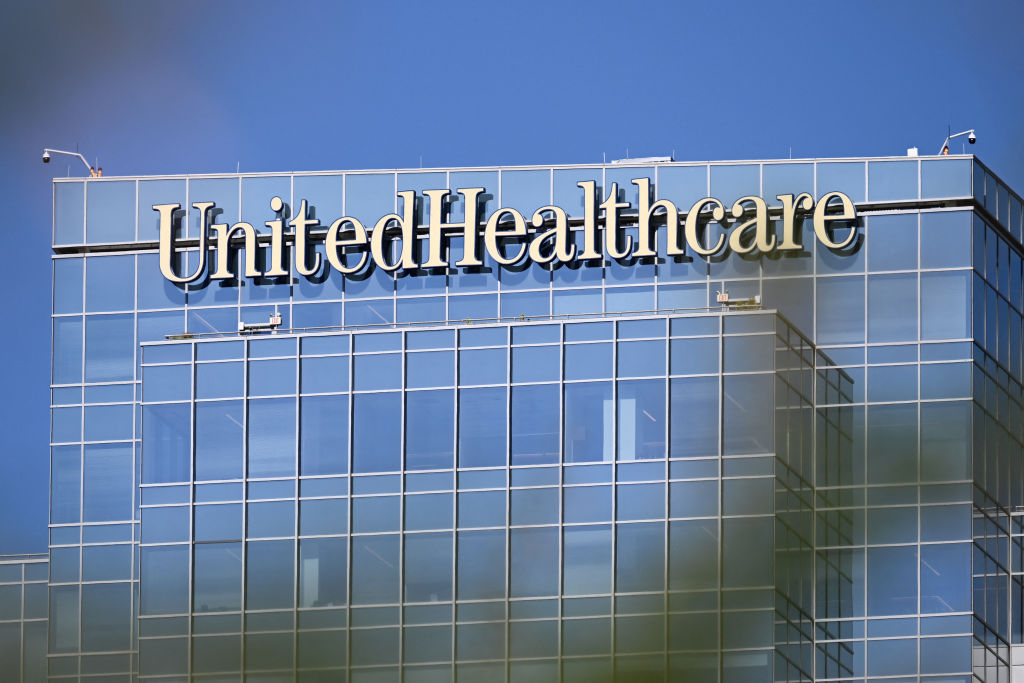UnitedHealth Stock Drags on Dow: Stock Market Today
Corporate earnings have dominated Wall Street's attention this week, but that changes on Wednesday.



Stocks opened higher Tuesday, putting the S&P 500 and Nasdaq Composite on track for new record highs. But the main indexes had swung lower by lunchtime as market participants parsed the latest round of corporate earnings reports and looked ahead to tomorrow's conclusion of the July Fed meeting.
Among the day's biggest post-earnings movers was Novo Nordisk (NVO), which cratered 21.8% after the Danish drugmaker cut its outlook for 2025.
The company now expects revenue growth of 11% at the midpoint and operating profit growth of 13%, down from the 17% and 20% growth it had called for in May.
From just $107.88 $24.99 for Kiplinger Personal Finance
Become a smarter, better informed investor. Subscribe from just $107.88 $24.99, plus get up to 4 Special Issues

Sign up for Kiplinger’s Free Newsletters
Profit and prosper with the best of expert advice on investing, taxes, retirement, personal finance and more - straight to your e-mail.
Profit and prosper with the best of expert advice - straight to your e-mail.
The reduced guidance "is related to lower growth expectations for Wegovy in the U.S. obesity market, lower growth expectations for Ozempic in the U.S. GLP-1 diabetes market, as well as lower-than-expected penetration for Wegovy" in select markets, Novo Nordisk said in its earnings release.
Shortages of the company's popular weight-loss drugs allowed compounding pharmacies to produce knockoff versions of Wegovy, which increased competition and reduced demand.
In a separate statement, the company said that Maziar Mike Doustdar will replace outgoing CEO Lars Fruergaard Jorgensen, effective August 7.
Procter & Gamble warns of rising prices
Elsewhere on the earnings calendar, Procter & Gamble (PG) reported higher-than-expected fiscal fourth-quarter earnings of $1.48 per share on in-line revenue of $20.9 billion.
For fiscal 2026, the company expects net sales to be up 3% and earnings per share to grow 2% at the midpoint of their respective ranges. The outlook anticipates a $1 billion headwind from President Donald Trump's tariff policies.
PG also said it will raise prices on roughly a quarter of its products to mitigate the cost of tariffs.
On Monday, Procter & Gamble announced that Shailesh Jejurikar, its current chief operating officer, will succeed Jon Moeller as CEO, effective January 1, 2026.
UnitedHealth stock sinks on weak guidance
PG fell 0.3%, though it was hardly the worst-performing Dow Jones stock today. That honor went to UnitedHealth Group (UNH).
The blue chip stock sank 7.5% after the country's largest health insurer gave disappointing full-year guidance due in part to rising medical costs.
"When we prepared our 2025 Medicare Advantage offerings back in the first half of 2024, we significantly underestimated the accelerating medical trend and did not modify benefits or plan offerings sufficiently to offset the pressures we are now experiencing," said UnitedHealthcare CEO Tim Noel on the company's earnings call.
As for its second-quarter results, UnitedHealth reported lower-than-expected earnings of $4.08 per share on slightly higher revenue of $111.6 billion.
UNP, Norfolk Southern announce merger
In non-earnings news, Union Pacific (UNP) said it will buy fellow railroad Norfolk Southern (NSC) for $320 per NSC share. The cash-and-stock deal gives Norfolk an enterprise value of roughly $85 billion.
The merger, if approved by regulators, will create the country's first transcontinental railroad. UNP dropped 2.4% today, while NSC declined 3.0%.
As for the main indexes, the Dow Jones Industrial Average fell 0.5% to 44,632, the S&P 500 shed 0.3% to 6,370, and the Nasdaq Composite gave back 0.4% to 21,098.
Job openings decline ahead of the Fed
Ahead of tomorrow's Fed announcement, data from the Bureau of Labor Statistics showed that job openings edged down to 7.4 million in June from May's 7.7 million.
"The job market remained lackluster in June, largely because employers are operating under great uncertainty," says Elizabeth Renter, senior economist at NerdWallet. "When companies can't make predictions about the economy and therefore their operations, they tend to wait for more information."
In other words, many businesses are pausing hiring and firing plans until a clearer picture emerges on the tariff front.
And we're likely to hear the central bank echo this wait-and-see philosophy in Wednesday's policy statement and for Fed Chair Jerome Powell to issue a similar outlook in his press conference.
Indeed, Powell has made it clear that the Federal Reserve will stay data-dependent until it sees how tariffs impact inflation.
Related content
- What CEOs Say About President Trump and Fed Chair Powell
- Figma IPO: Should You Buy FIG Stock?
- When Is the Next Jobs Report?
Profit and prosper with the best of Kiplinger's advice on investing, taxes, retirement, personal finance and much more. Delivered daily. Enter your email in the box and click Sign Me Up.

With over a decade of experience writing about the stock market, Karee Venema is the senior investing editor at Kiplinger.com. She joined the publication in April 2021 after 10 years of working as an investing writer and columnist at a local investment research firm. In her previous role, Karee focused primarily on options trading, as well as technical, fundamental and sentiment analysis.
-
 It's Beginning to Look a Lot Like a Santa Rally: Stock Market Today
It's Beginning to Look a Lot Like a Santa Rally: Stock Market TodayInvestors, traders and speculators are beginning to like the looks of a potential year-end rally.
-
 The 2026 Retirement Catch-Up Curveball: What High Earners Over 50 Need to Know Now
The 2026 Retirement Catch-Up Curveball: What High Earners Over 50 Need to Know NowUnlock the secrets of the 2026 retirement catch-up provisions: A must-read for high earners aged 50 and above.
-
 How Much a $100K Jumbo CD Earns You
How Much a $100K Jumbo CD Earns YouYou might be surprised at how fast a jumbo CD helps you reach your goals.
-
 Stocks Rise to the Spirit of the Season: Stock Market Today
Stocks Rise to the Spirit of the Season: Stock Market TodayInvestors, traders and speculators are beginning to like the looks of a potential year-end rally.
-
 A Financial Planner Takes a Deep Dive Into How Charitable Trusts Benefit You and Your Favorite Charities
A Financial Planner Takes a Deep Dive Into How Charitable Trusts Benefit You and Your Favorite CharitiesThese dual-purpose tools let affluent families combine philanthropic goals with advanced tax planning to generate income, reduce estate taxes and preserve wealth.
-
 A 5-Step Plan for Parents of Children With Special Needs, From a Financial Planner
A 5-Step Plan for Parents of Children With Special Needs, From a Financial PlannerGuidance to help ensure your child's needs are supported now and in the future – while protecting your own financial well-being.
-
 How Financial Advisers Can Best Help Widowed and Divorced Women
How Financial Advisers Can Best Help Widowed and Divorced WomenApproaching conversations with empathy and compassion is key to helping them find clarity and confidence and take control of their financial futures.
-
 A Wealth Adviser Explains: 4 Times I'd Give the Green Light for a Roth Conversion (and 4 Times I'd Say It's a No-Go)
A Wealth Adviser Explains: 4 Times I'd Give the Green Light for a Roth Conversion (and 4 Times I'd Say It's a No-Go)Roth conversions should never be done on a whim — they're a product of careful timing and long-term tax considerations. So how can you tell whether to go ahead?
-
 A 4-Step Anxiety-Reducing Retirement Road Map, From a Financial Adviser
A 4-Step Anxiety-Reducing Retirement Road Map, From a Financial AdviserThis helpful process covers everything from assessing your current finances and risks to implementing and managing your personalized retirement income plan.
-
 The $183,000 RMD Shock: Why Roth Conversions in Your 70s Can Be Risky
The $183,000 RMD Shock: Why Roth Conversions in Your 70s Can Be RiskyConverting retirement funds to a Roth is a smart strategy for many, but the older you are, the less time you have to recover the tax bite from the conversion.
-
 A Financial Pro Breaks Retirement Planning Into 5 Manageable Pieces
A Financial Pro Breaks Retirement Planning Into 5 Manageable PiecesThis retirement plan focuses on five key areas — income generation, tax management, asset withdrawals, planning for big expenses and health care, and legacy.